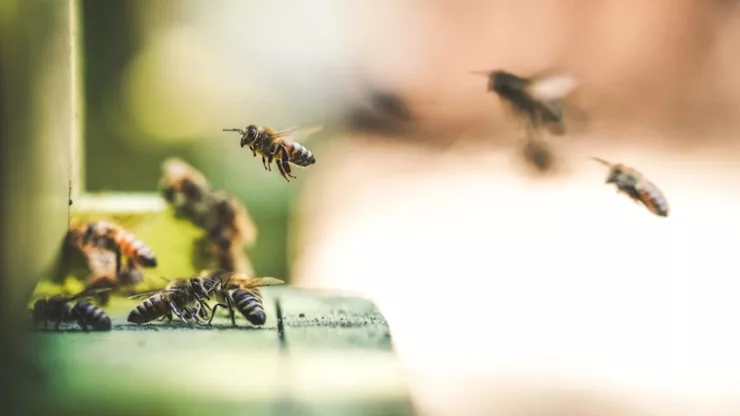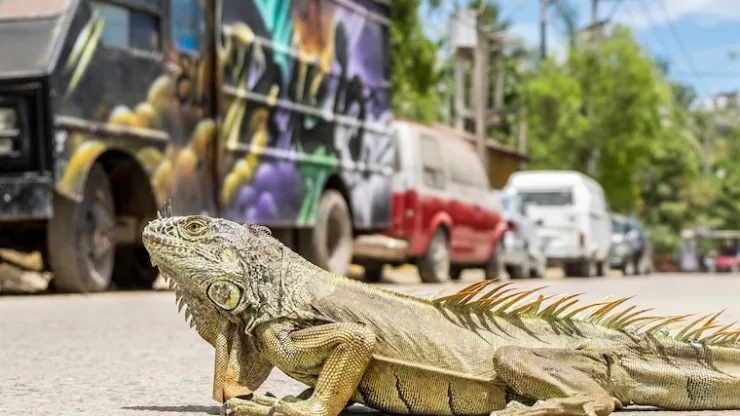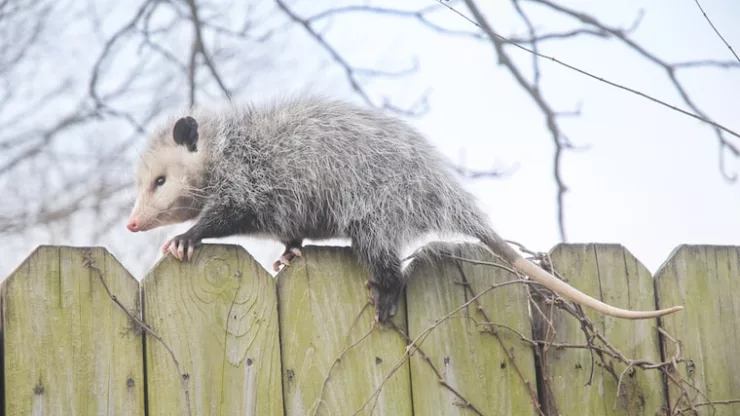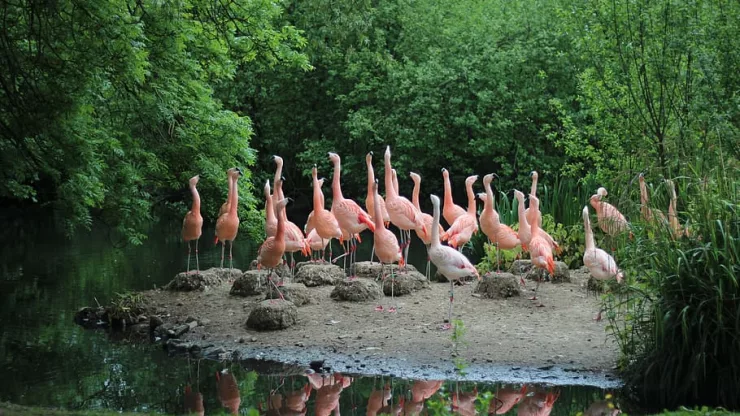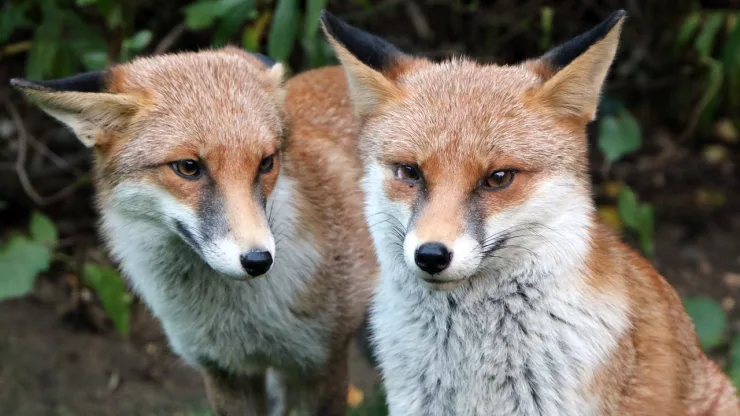Jump to Section
Introduction
Pollinators such as bees play a crucial role in our ecosystem.
They are responsible for pollinating crops and plants, which in turn supports biodiversity and the production of food.
While honeybees are often the most well-known pollinators, they are not the only ones that contribute to this process.
Native bees, which are often smaller and more solitary than honeybees, also play a significant role in the pollination process.
Unfortunately, many native bee populations are declining due to habitat loss, pesticide use, and other factors.
As a result, it is essential to encourage native bees in the urban landscape.
Importance of Native Bees
Native bees are essential pollinators for both wild plants and crops.
Unlike honeybees, which are not native to North America, native bees have evolved alongside native plants and are thus better adapted to pollinate them.
This relationship is mutually beneficial as native plants provide food and shelter for native bees, while the bees ensure the plants’ survival through pollination.
Additionally, native bees are often more efficient pollinators than honeybees.
They are better able to navigate complex flower structures and are more active in cooler temperatures, making them ideal for pollinating early-blooming plants.
Benefits of Encouraging Native Bees in Urban Landscapes
Encouraging native bees in urban landscapes has numerous benefits. For one, it supports biodiversity and helps to maintain healthy ecosystems.
Additionally, native bees are often more resilient to environmental stressors than honeybees, making them a more reliable pollinator in the face of climate change and other challenges.
Finally, by supporting native bee populations, we can help to ensure a stable food supply for both humans and wildlife.
Understanding Native Bees
Before you can encourage native bees in your landscape, it is essential to understand their characteristics and behavior.
Unlike honeybees, which live in large colonies, most native bees are solitary.
They do not produce honey or have a queen bee, but instead, each female bee builds her own nest and raises her offspring independently.
Additionally, most native bees do not sting unless provoked, making them safe to have around.
There are many different types of native bees, each with their own unique characteristics.
Bumblebees, for example, are large and furry, making them excellent pollinators for plants with deep flowers.
Mason bees, on the other hand, are smaller and prefer to nest in hollow stems or holes in wood.
By understanding the different types of native bees, you can create a landscape that is tailored to their needs.
Creating a Bee-Friendly Environment
To encourage native bees in your landscape, you need to create a bee-friendly environment. This involves providing food, shelter, and nesting sites for these important pollinators.
Planting Native Flowers and Shrubs
One of the most important steps in creating a bee-friendly environment is to plant native flowers and shrubs.
Native plants provide the nectar and pollen that native bees need to survive.
Additionally, they are often better adapted to local climate and soil conditions, making them easier to maintain.
When selecting plants, choose a variety of species that bloom at different times of the year to provide a continuous source of food for the bees.
Providing Shelter and Nesting Sites
Native bees need shelter and nesting sites to thrive.
You can provide this by leaving dead trees and branches in place, as many native bees nest in hollow stems and holes in wood.
Additionally, you can create a bee hotel by drilling holes in a block of wood or bundling hollow stems together.
Be sure to place the bee hotel in a sunny, sheltered location.
Avoiding Pesticides and Herbicides
Pesticides and herbicides are harmful to native bees and other pollinators. To create a bee-friendly environment, avoid using these chemicals in your landscape.
Instead, use natural pest control methods such as companion planting and handpicking pests.
Maintaining the Bee-Friendly Environment
Once you have created a bee-friendly environment, it is essential to maintain it properly. This involves watering and fertilizing plants as needed and monitoring bee activity.
Watering and Fertilizing
Be sure to water your plants regularly, especially during dry periods. Additionally, fertilize plants with a natural fertilizer such as compost or worm castings.
Avoid using chemical fertilizers, as these can harm bees and other pollinators.
Monitoring Bee Activity
Finally, it is important to monitor bee activity in your landscape.
Keep an eye out for signs of bee activity, such as holes in wood or bees visiting flowers.
If you notice a decline in bee activity, it may be necessary to plant additional flowers or provide additional nesting sites.
Conclusion
Encouraging native bees in the urban landscape is essential for maintaining healthy ecosystems and supporting biodiversity.
By understanding native bees’ characteristics and needs and creating a bee-friendly environment, you can help to ensure their survival.
By taking these steps, you can make a positive impact on the environment and support these crucial pollinators.
FAQs
What are native bees?
Native bees are bees that are native to a particular region.
Unlike honeybees, which are not native to North America, native bees have evolved alongside native plants and are thus better adapted to pollinate them.
Why are native bees important?
Native bees are essential pollinators for both wild plants and crops.
Additionally, they are often more efficient pollinators than honeybees, making them ideal for pollinating early-blooming plants.
How can I encourage native bees in my landscape?
You can encourage native bees in your landscape by planting native flowers and shrubs, providing shelter and nesting sites, and avoiding pesticides and herbicides.
What types of native bees are there?
There are many different types of native bees, each with their own unique characteristics.
Bumblebees, for example, are large and furry, making them excellent pollinators for plants with deep flowers.
Mason bees, on the other hand, are smaller and prefer to nest in hollow stems or holes in wood.
How can I maintain a bee-friendly environment?
To maintain a bee-friendly environment, water and fertilize plants as needed and monitor bee activity for signs of decline.
Additionally, avoid using pesticides and herbicides, as these can harm bees and other pollinators.
I’m a nature enthusiast and creator of Metro Wilds and have spent years exploring the great outdoors.
With a passion for environmental conservation and sustainability, I have dedicated my career to writing about the beauty and wonders of nature, as well as the threats facing our planet.
Contact me at [email protected] for assistance.

